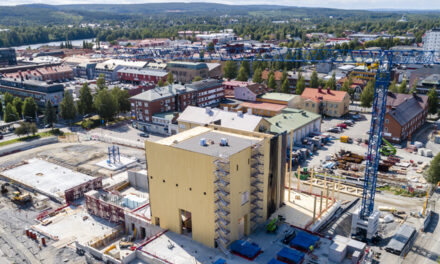
Data mapping enhancements
A criteria-based method of mapping model output onto elements to create a load definition is now available in version 12. A criteria option is also available when defining an output map data surface in the data surface editor.
Discrete value plots
You can also create discrete value color plots based on an element value or range of values including entity ID, materials and properties.
Mesh point editor
- In version 12 you have access to a new mesh point editor capability, with which you can specify hard points on the geometry that you want to appear as nodes in any mesh generated subsequently using that geometry. As you create hard points, they will appear in the mesh point editor in a tabular arrangement, and will be evident on the model and identifiable via a new mesh point symbol.
Cohesive entities
In support of the new multi-step nonlinear capabilities in NX Nastran solution sequences 401 and 402, Femap version 12 adds support for cohesive entities including elements, properties and materials, in addition to a new cohesive meshing function that inserts a layer of cohesive elements at a user-defined split location.
Postprocessing enhancements
Dynamic criteria
- You can interactively adjust criteria limits using a slider bar to create dynamic criteria plots and optionally display criteria labels and/or use the absolute value of the selected output vector to help visualize results output.
Report generator
 A dialog-controlled report generator is available that enables Femap to interact directly with Microsoft Word to seamlessly create an analysis report of the current model file. You can control the content of the report through tabs in the report generator dialog including:
A dialog-controlled report generator is available that enables Femap to interact directly with Microsoft Word to seamlessly create an analysis report of the current model file. You can control the content of the report through tabs in the report generator dialog including:
- General information such as analyst name, company, organization and description
- Entities to include such as loads, constraints, output, groups, connections, layouts, etc.
- Images to include, with control of image views and formatting
Solver support
Solver updates include support for multi-step nonlinear solutions, a new topology optimization capability, extensions to design optimization, as well as numerous enhancements to the ANSYS solver interface.
Multi-step nonlinear solutions
NX Nastran solution sequences SOL 401 and SOL 402 are now supported in Femap version 12, allowing you to perform multi-step nonlinear analyses using the more flexible subcase-based analysis control of these solutions. SOL 401 is the multi-step nonlinear solver where subcases can be dependent or independent of the previous subcase, and where you can change analysis type in a subcase. With this approach you can define linear, nonlinear, modal, and bolt preload subcases to create a combined solution in the analysis manager.
SOL 402 is the multi-step nonlinear solver with kinematics, which has similar workflows and combines the advantages of solution sequences 401 and 601. Both solutions support a wide variety of element and material types.
Design optimization
- The design optimization solution sequence, SOL 200, has been updated to enhance ease of use and extend support for NX Nastran capabilities. You can now set up multiple design studies within a single model using the analysis manager. The types of solution supported have been expanded to include frequency response, model transient and steady aeroelasticity, and different solution sequences can be defined for each subcase. In addition, support for design variables, relationships, responses and constraints has been greatly enhanced.
Topology optimization
 The SOL 200 solution sequence also includes topology optimization and is supported by Femap version 12. Note, however, that the topology optimization capability in NX Nastran is intended to be for preview only in this release.
The SOL 200 solution sequence also includes topology optimization and is supported by Femap version 12. Note, however, that the topology optimization capability in NX Nastran is intended to be for preview only in this release.
- Compatible solution sequences include statics, modes, linear buckling, modal frequency and transient. Also a variety of 2D and 3D element types are supported, and there is support for manufacturing constraints. You can also export the final geometry, based on normalized mass density output, in STL format.






